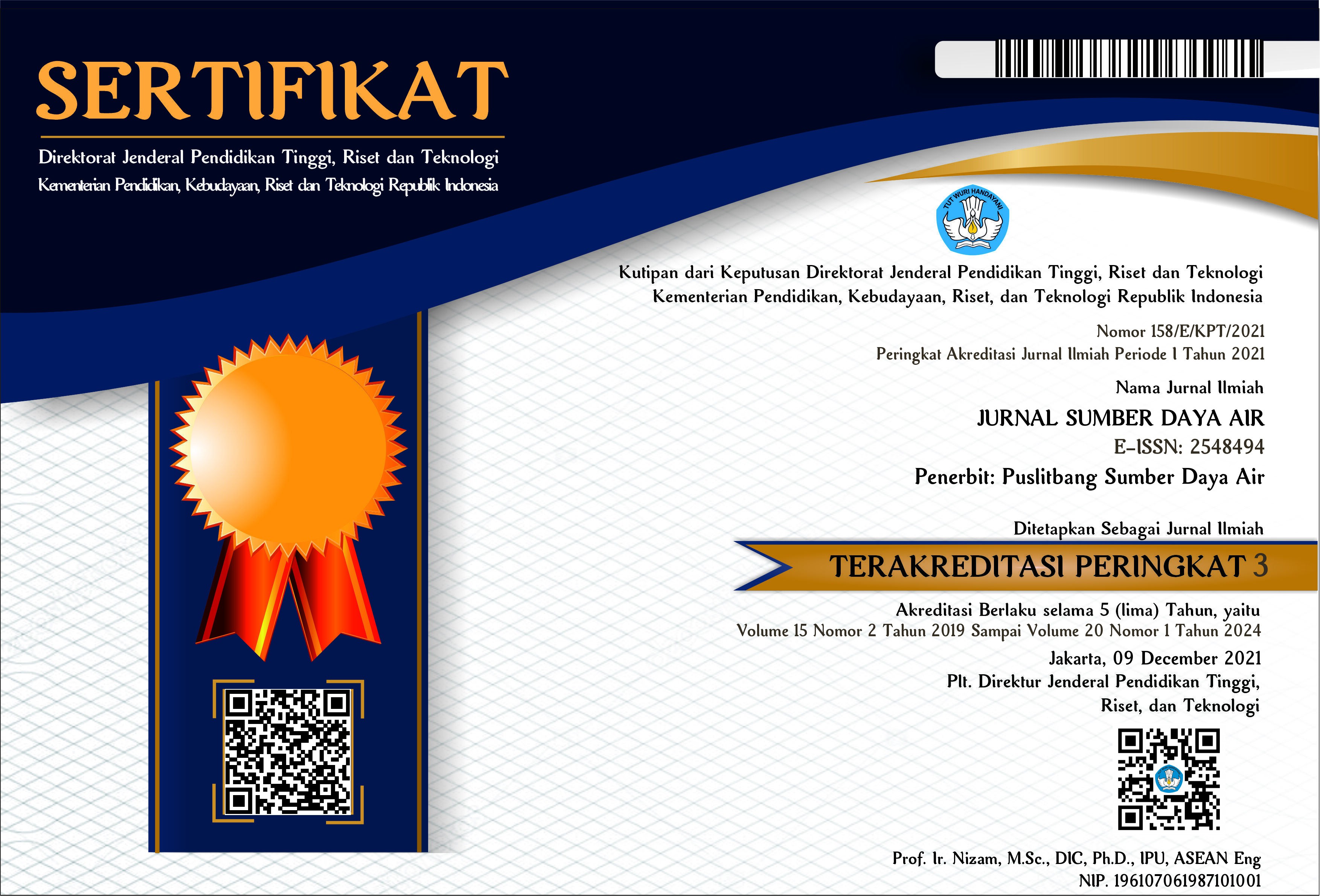Assesment on septage treatment facility in Indonesian cities based on factor analysis
DOI:
https://doi.org/10.32679/jsda.v12i2.62Keywords:
Water pollution, analysis factor, decision makingAbstract
The problem of water pollution is complex. There are many factors that influence the successfull of efforts for water pollution control. The construction and operation of septage treatment facility (IPLT) is an efforts for controlling pollution from domestic activities. The successfull of IPLT management cannot be assessed from physical aspect of the building only. Other aspects such as quality of effluent, sludge supply, idle capacity, the rate of surface loading and volumetric loading, human resources, organization, standard operating procedures (SOP), the tariff and others should be consider for decision making to manage IPLT better. The purpose of this study is to describe the application of factor analysis method to solve a complex problem of IPLT through identifying the main causes and formulate solutions. Factor analysis is one of decision with multicriteria. The primary data research in 2014 used as reference for analyzing. The conclusion of this study is the factor analysis is able to classify 12 indicators into 3 factors without reducing the meaning of the constituent indicator, thus simplifying the decision making process. Significant factors that affecting the successfull of IPLT performance in controlling water pollution are : continuity of sludge supply, clarity of roles and responsibilities, availability, novelty, accesibility and simplicity of SOP.
References
Abbas Toloui, Yachoub Alawi Matin. 2012. Measuring Technological Level and Capability of the Industries in East Azerbaijan and Providing Proper Strategies for Improvement and Promotion of Technology. Journal of Basic and Applied Scientific Research 2(4) 2012: 3664-3669.
Hanien Nia H Shega, Rita Rahmawati, Hasbi Yasin. 2012. Penentuan Faktor Prioritas Mahasiswa dalam Memilih Telepon Seluler Merk Blackberry dengan Fuzzy AHP. Jurnal Gaussian Vol 1, No 1 : 73-82.
Iwan Inrawan Wiratmadja, Rajesri Govindarayu, Evy Setiawati, 2011. Analysing the Influence of Technology on the Business Performance of Rattan Processing SME’s in South Kalimantan. IEMS vol 1 no 2 : 104-108.
Kamaladdin Rahmani, Mahmood Behravesh, Masoud Bahravesh, Nayere Karegar, Abolfazl Fereidononi. 2010. Examining, the Level and Strengths of Technology in the Industries of the Country Iran by Using Escap Model and Introducing Solution for Developing Technology. Australian Journal of Basic and Applied Science 4(10) : 4638-4649.
Kementerian Kesehatan. 2013. Profil Kesehatan Indonesia 2012.
Maryam Ebrahimi, Abbas Moghbel Baerz, Seyed Hamid Khodadad Hosseimi, Adel Azar. 2013. A New Technology Assessment: A Case Study of Iran Petrocemical Industries. International Journal of Humanities vol 20(3) : 27-51.
M Despeesse, F Mbaye, PD Ball, A lever. 2011. The Emergence of Sustainable Manufacturing Practices. Production Planning & Control: The Management of Operations vol. 23, no. 5 : 354-376.
Mohammad Reza, Kabaranzad Ghadim, Babak Sohrabi. 2011. Recocnation and Selection of Optimal Method for Transferring Technology in Tehran Gas Organization. Journal of Science and Technology vol 4 No 9 : 1129-1136.
Nyayu Mariam. 2014. Kajian Kinerja Instalasi Pengolahan Lumpur Tinja (IPLT) (Studi Kasus IPLT Sungai Medang Kota Prabumulih). Thesis. Pada Jurusan Teknik Sipil, Universitas Gajah Mada, Yogyakarta, Indonesia.
Pamekas, R. 2013. Pembangunan dan Pengelolaan Infrastruktur Kawasan Permukiman. Bandung : Pustaka Jaya.
Puslitbang Permukiman. 2013. Laporan Akhir: Kegiatan Pengembangan Teknologi Instalasi Pengolahan Lumpur Tinja. Bandung
Retno Indriartiningtias, Resta Amijaya, Widi Nugroho. 2014. Penilaian Teknologi 2 Industri Pembuat Skop dengan Metode Teknometrik. Jurnal Metris 15 : 89-96.
Sarono, E Gumbira Said, Ono Suparno, Suprihatin, Udin Hasanudin. 2014. Evaluation of Technological Content of Wastewater Treatment of Palm Oil Mill in Lampung Province, Indonesia. Environment Asia 7(1) : 39-44.
Downloads
Published
How to Cite
Issue
Section
License
The Authors submitting a manuscript do so on the understanding that if accepted for publication, copyright of the article shall be assigned to Jurnal Sumber Daya Air and Pusat Penelitian dan Pengembangan Sumber Daya Air as publisher of the journal.Copyright encompasses exclusive rights to reproduce and deliver the article in all form and media, including reprints, photographs, microfilms and any other similar reproductions, as well as translations. The reproduction of any part of this journal, its storage in databases and its transmission by any form or media, such as electronic, electrostatic and mechanical copies, photocopies, recordings, magnetic media, etc. , will be allowed only with a written permission from Jurnal Sumber Daya Air and Pusat Penelitian dan Pengembangan Sumber Daya Air.
Jurnal Sumber Daya Air and Pusat Penelitian dan Pengembangan Sumber Daya Air, the Editors and the Advisory International Editorial Board make every effort to ensure that no wrong or misleading data, opinions or statements be published in the journal.




















